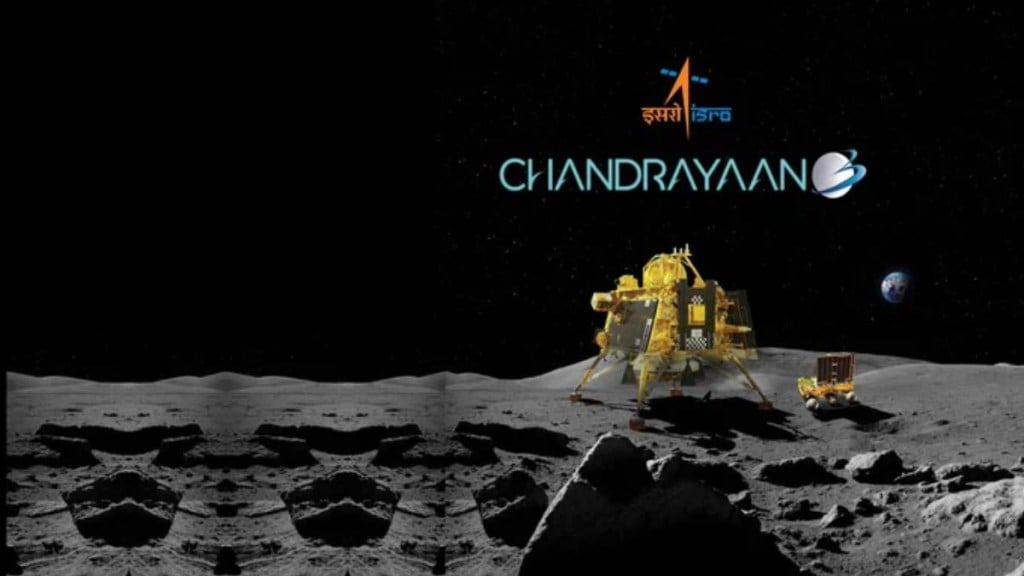In a significant scientific endeavour, reminiscent of the hop experiment conducted on the Vikram Lander, the Propulsion Module (PM) of Chandrayaan-3 underwent a distinctive transition from orbiting the Moon to orbiting Earth.
The launch of the spacecraft took place on July 14, 2023, utilizing the LVM3-M4 vehicle from SDSC, SHAR. This mission carried a pivotal objective – showcasing a soft landing in the lunar South Polar Region and conducting intricate experiments leveraging the instruments equipped on Vikram and Pragyaan.
The historic touchdown of the Vikram Lander took place on August 23rd, followed by the subsequent deployment of the Pragyan rover. The scientific instruments contained in both the Lander and Rover functioned continuously for one lunar day, thus successfully achieving the outlined mission objectives of Chandrayaan-3. Meanwhile, the Propulsion Module focused on ferrying the Lander module from Geostationary Transfer Orbit (GTO) to the final lunar polar circular orbit and executing the separation of the Lander. Post-separation, the Spectro-polarimetry of HAbitable Planet Earth (SHAPE) payload within the PM was activated.
Surprisingly, the precise orbit injection facilitated by LVM3, coupled with optimal earth and lunar burn maneuvers, resulted in a surplus of over 100 kg of fuel in the PM after a month of lunar orbit operations. The decision was made to capitalize on this available fuel, utilizing it to glean additional information for forthcoming lunar missions and to demonstrate mission operation strategies for a sample return mission.
To sustain the SHAPE payload for Earth observation, a strategic decision was made to reposition the PM to a suitable Earth orbit in October 2023. This meticulous mission plan factored in collision avoidance measures, ensuring the PM would neither collide with the Moon’s surface nor enter Earth’s Geostationary Earth Orbit (GEO) belt at 36,000 km and orbits below that. Considering the estimated fuel availability and prioritizing the safety of GEO spacecraft, an optimal Earth return trajectory was charted for October 2023.
The initial manoeuvre on October 9, 2023, aimed to elevate the apolune altitude to 5112 km from 150 km, effectively extending the orbit’s period from 2.1 hours to 7.2 hours. Subsequently, the second manoeuvre plan was adjusted, targeting an Earth orbit of 1.8 lakhs x 3.8 lakhs km. The crucial Trans-Earth Injection (TEI) manoeuvre occurred on October 13, 2023. In the post-TEI manoeuvre realized orbit, the propulsion module completed four Moon fly-bys before departing the Moon’s Sphere of Influence (SOI) on November 10.
At present, the propulsion module is orbiting Earth, having crossed its first perigee on November 22nd with an altitude of 1.54 lakhs km. The orbit period spans nearly 13 days, featuring a 27-degree inclination. The perigee and apogee altitude fluctuate during its trajectory, with the predicted minimum perigee altitude at 1.15 lakhs km. According to the current orbit prediction, there are no foreseen threats of a close approach with any operational Earth orbiting satellites.
As per the devised plan, the SHAPE payload continues to operate whenever Earth is within its field of view. Notably, a special operation of the SHAPE payload unfolded on October 28, 2023, during a Solar Eclipse. The operations of the SHAPE payload are set to persist.
The UR Rao Satellite Centre/ISRO’s flight dynamics team played a pivotal role in this operation by developing an analysis tool from first principles, which is currently undergoing validation through the return manoeuvres conducted for the Chandrayaan-3 PM.
The tangible outcomes stemming from the return manoeuvres conducted on CH3 PM in relation to future missions encompass the planning and execution of trajectories and manoeuvres for the return from Moon to Earth, the development of a software module to meticulously plan such manoeuvres, along with its preliminary validation. Furthermore, the planning and execution of a gravity-assisted flyby across a planet or celestial body, coupled with the imperative objective of avoiding uncontrolled crashing of the PM on the Moon’s surface at the end of its operational life, have been successfully achieved. This approach aligns with the stringent requirement of ensuring no debris creation in space.

